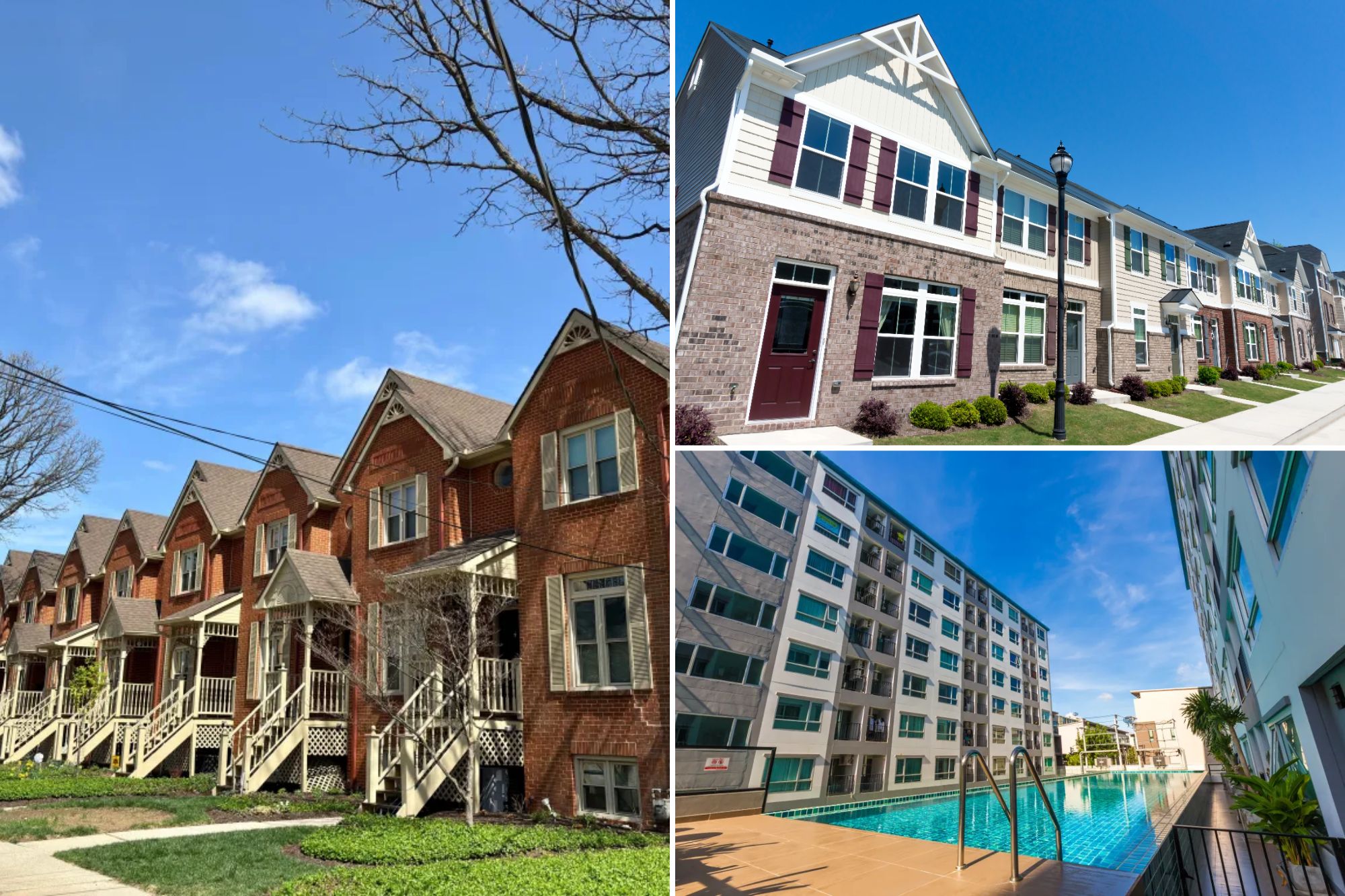B
uyers who can’t afford a detached house often turn to condos or townhouses because both offer lower prices, less upkeep, and a smoother path to ownership. How those benefits translate into long‑term wealth, however, varies by property type and location.
Over the past decade the U.S. housing market has seen strong gains across the board. From 2014 to 2024, single‑family homes rose 87.3 %, townhomes 86.5 %, and condos 82.7 %. The narrow gap reflects the different roles each type plays: single‑family homes remain the most popular, while condos attract buyers seeking smaller footprints and lower maintenance. Townhomes, meanwhile, have edged closer to single‑family performance, appealing to those who want a “house‑like” feel without the higher price tag.
Nationally, condos and townhomes have appreciated almost in lockstep, but local dynamics create sharper divergences. In the Midwest, condo values climbed 78.3 % versus 70.7 % for townhomes. The South mirrored this trend: condos up 66.7 % against 53.1 % for townhomes. In contrast, the Northeast and West show the opposite pattern. Townhomes surged 80.5 % in the Northeast and 83.8 % in the West, outpacing condos, which gained 58.6 % and 78.9 % respectively. Affordability drives these differences: in lower‑cost markets condos thrive in dense downtown cores, while in high‑cost, supply‑constrained metros townhomes command a premium as buyers seek a detached‑home alternative.
**Townhouses: land ownership and steady growth**
Owning a townhouse means holding both the structure and the parcel it sits on. Land appreciation tends to be more reliable, giving townhomes strong long‑term potential. Because they resemble single‑family homes, townhouses attract families, downsizers, and first‑time buyers alike. HOA fees are typically lower than condos, freeing more cash for the mortgage and easing resale, as future buyers are less deterred by high monthly dues or looming assessments.
However, townhomes can lose traction if single‑family inventories rise and prices soften, drawing buyers back to detached homes. In markets where single‑family supply expands, demand for townhomes may wane.
**Condos: density, amenities, and urban appeal**
Condos excel in tight urban markets where land is scarce and demand for city living is high. In places like Miami Beach, New York, and San Francisco, condos often dominate and can appreciate robustly. High‑rise, amenity‑rich buildings—offering concierge service, pools, gyms, and other perks—attract luxury buyers and second‑home seekers. For full‑time residents, these amenities can boost perceived value at sale time.
Yet condos face higher potential costs. Special assessments can arise for building repairs or upgrades, sometimes reaching millions of dollars, as seen in a Miami condo that faced a $1 million assessment to meet safety standards. Monthly HOA fees can also erode returns; a $300–$500 monthly charge translates to $36,000–$60,000 over ten years that does not reduce the mortgage principal. Luxury Boston high‑rises with $2,000+ monthly fees illustrate how stagnant appreciation can be offset by high costs.
**Hidden costs that eat equity**
Both property types incur hidden expenses beyond appreciation and loan paydown. Single‑family owners shoulder all maintenance, including costly roof replacements, while condo owners may face special assessments for shared facilities. HOA fees, reserve fund adequacy, and potential future repairs can significantly impact net returns. Buyers should review meeting minutes and financial statements to gauge reserve health and anticipate upcoming projects.
**Looking ahead**
The next decade will likely sharpen the divide between condos and townhouses. As affordability pressures mount, first‑time buyers may lean more heavily into condos, revitalizing downtown demand. Simultaneously, zoning reforms and the persistent shortage of single‑family homes could push buyers toward townhouses as the closest substitute for detached ownership. Policy decisions—property tax incentives, condo reserve requirements, and safety regulations—will also shape which type captures greater appreciation.
For investors, the key is not to pick a single winner but to understand how local affordability, supply constraints, and regulation tilt the playing field. Townhomes tend to mirror single‑family home trajectories, benefiting from land value and a “house‑like” appeal. Condos thrive where density and affordability drive demand, especially in urban cores and lower‑cost regions. By aligning investment choices with regional dynamics and cost structures, buyers can maximize long‑term equity growth.













